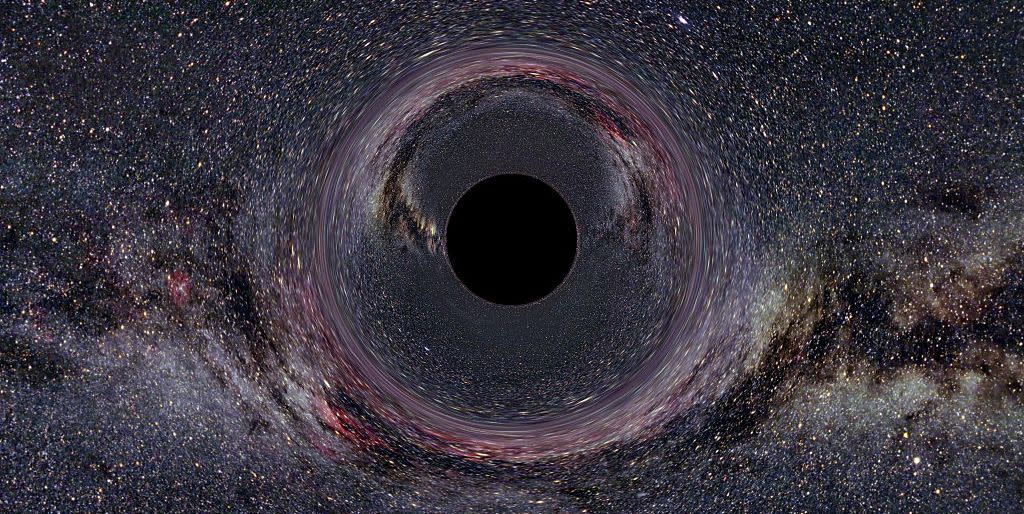Stephen Hawking Was Right: Black Holes Simply Can't Shrink

- Oops!Something went wrong.Please try again later.
Scientists have confirmed one of Stephen Hawking's famous theorems about black holes.
"Hawking's Area Theorem" states that a black hole's event horizon area can never shrink.
To prove the theorem true, the researchers measured gravitational waves both before and after two black holes merged.
Scientists have just confirmed a 50-year-old theorem about black holes, dreamt up by none other than Stephen Hawking. The astrophysics concept, codified as "Hawking's Area Theorem" in 1971, says a black hole's event horizon (the boundary beyond which nothing, probably not even you, could escape) can never shrink.
🌓 You think the universe is badass. So do we. Let's nerd out over it together.
An object would need to travel faster than the speed of light in order to escape a black hole, according to the theorem, meaning the event horizon is essentially the point of no return for virtually every object you can imagine. Per Hawking's calculations, if a black hole changes in size, for example, it will "stretch" or constrict the event horizon along with its new size.
Up until now, scientists had only ever proven Hawking's Area Theorem through mathematics. For the first time, researchers from the Massachusetts Institute of Technology (MIT), California Institute of Technology, Cornell University, and Stony Brook University have confirmed it observationally by studying two "inspiraling" black holes (meaning they're spiraling inward into one another) that created an altogether new black hole. They published their findings earlier this month in the journal Physical Review Letters.

In the study, the researchers take a closer look at GW150914, the first gravitational wave signal detected by the Laser Interferometer Gravitational-Wave Observatory (LIGO) in 2015. LIGO is a national facility with two locations (one in Hanford, Washington and the other in Livingston, Louisiana), constructed to detect cosmic gravitational waves.
The signal, they discovered, was the product of two merging black holes, along with a vast amount of energy that rippled across the space-time continuum. The idea in their paper is simple: If Hawking's theorem were to hold, they posited, then the event horizon area of the new black hole—created from the merger—should not be smaller than the total event horizon area of its parent black holes.

To prove it, they split up the gravitational wave data into "before" and "after" sections, then statistically analyzed both sections to see how their event horizon areas compare. They found that the two areas are statistically the same within a 95 percent confidence margin.
"The data show with overwhelming confidence that the horizon area increased after the merger, and that the area law is satisfied with very high probability," Maximiliano Isi—lead author of the paper, and a NASA Einstein Postdoctoral Fellow in MIT's Kavli Institute for Astrophysics and Space Research—said in a prepared statement. "It was a relief that our result does agree with the paradigm that we expect, and does confirm our understanding of these complicated black hole mergers."
This cool analysis doesn't just show an example of Hawking's theorem that underpins one of the central laws affecting black holes; it shows how analyzing gravitational wave patterns can bear out statistical findings. It also stands to reason the technology to measure gravitational waves will continue to improve, meaning even better datasets for scientists in the future.
Why does this theorem hold so much importance within the study of black holes? Well, it's a parallel, in some ways, to the laws of "regular" physics, like the law of conservation of mass. The ability to observe real life data that can back up the central laws governing black hole behavior can only advance the entire field, giving cosmologists concrete examples to point to as they continue to study these elusive and powerful phenomena.
🎥 Now Watch This:
You Might Also Like

